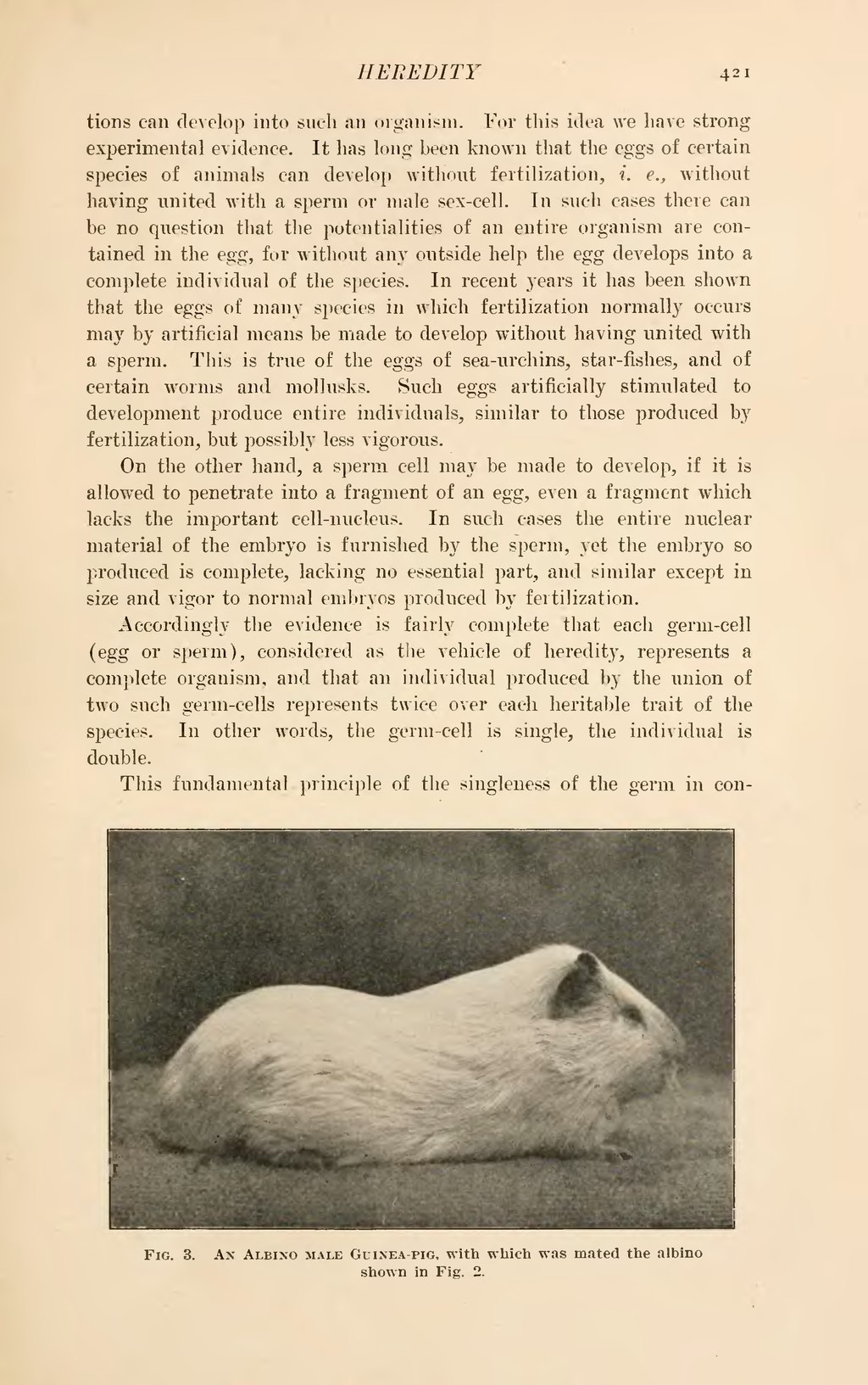tions can develop into such an organism. For this idea we have strong experimental evidence. It has long been known that the eggs of certain species of animals can develop without fertilization, i. e., without having united with a sperm or male sex-cell. In such cases there can be no question that the potentialities of an entire organism are contained in the egg, for without any outside help the egg develops into a complete individual of the species. In recent years it has been shown that the eggs of many species in which fertilization normally occurs may by artificial means be made to develop without having united with a sperm. This is true of the eggs of sea-urchins, star-fishes, and of certain worms and mollusks. Such eggs artificially stimulated to development produce entire individuals, similar to those produced by fertilization, but possibly less vigorous.
On the other hand, a sperm cell may be made to develop, if it is allowed to penetrate into a fragment of an egg, even a fragment which lacks the important cell-nucleus. In such cases the entire nuclear material of the embryo is furnished by the sperm, yet the embryo so produced is complete, lacking no essential part, and similar except in size and vigor to normal embryos produced by fertilization.
Accordingly the evidence is fairly complete that each germ-cell (egg or sperm), considered as the vehicle of heredity, represents a complete organism, and that an individual produced by the union of two such germ-cells represents twice over each heritable trait of the species. In other words, the germ-cell is single, the individual is double.
This fundamental principle of the singleness of the germ in contrast

